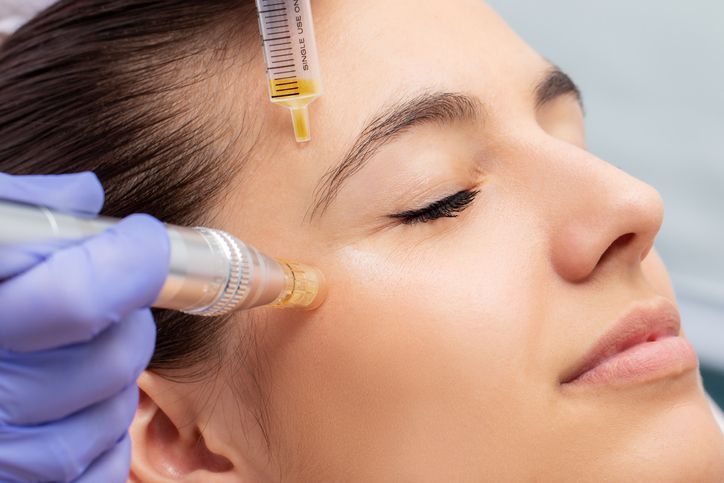
Understanding mesotherapy, and also all cosmetic applications requires to understand the skin primarily. The skin consists of layers containing different properties and functions. The reason for dermatological treatments for being professional is that the targeted effect can be achieved with the right injections to the correct layer. In mesotherapy, our target tissue is the dermis layer, which is the middle layer of the skin. This region is an important layer that contains fibrobasts that provide the synthesis of collagen and elastin fibers under the skin and feeds the basal cells that provide regeneration of the epidermis (upper layer of the skin). The regeneration and nutrition process initiated here shows its effects on both the lower and upper layers of the skin. Collagen and elastin fibers that have lost their elasticity and strength under the skin are re-synthesized. The skin is tightened and sagging is tried to be prevented. This effect is also the equivalent of the definition of lifting that we use frequently. With the renewal of the epidermis layer, aging-related spots, fine wrinkles, pale skin, which has lost its vitality, are tried to be recovered to its former quality and health. Hair loss can be reduced by nourishing the hair and it can be ensured that the hair regains its former health.
What Treatments Do We Apply to Form Such Effects in This Target Layer?
As it can be understood, while mesotherapy is the general name of the process, it can sometimes take different names depending on the product used. For example, if the serum used is your own blood, it is called PRP (platelet rich plasma), spot serum is called as spot mesotherapy, if antiaging products are used, it is called youth vaccine, and if skin tightening products are used, it is called mesolift.
Which Products Are Mostly Used For This Purpose?
- Own blood of the patient (PRP)
- Hyaluronic acid
- Salmon DNA
- Vitamins like A, C, E
- Trace elements
- Minerals
- Peptide and amino acids
- Growth factors
- Anti oxidants such as glutathione and CO enzyme Q10
- Spot correctors such as arginine, arbutin, idebenone, glycolic acid and hydroquinone
It is used in different proportions and amounts according to the needs of your skin, the applied area and the intended purpose.
